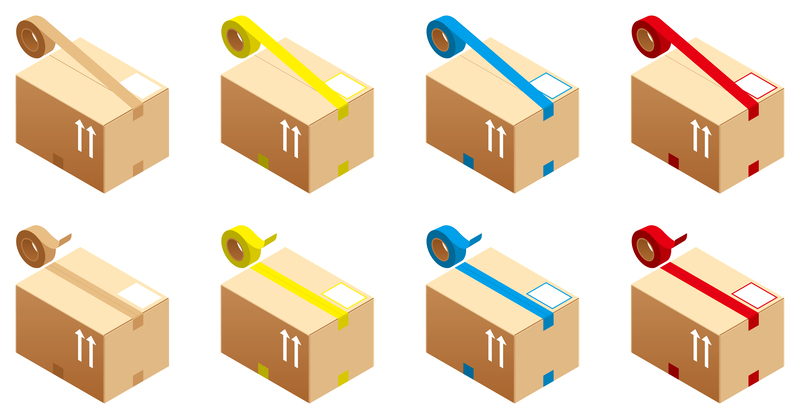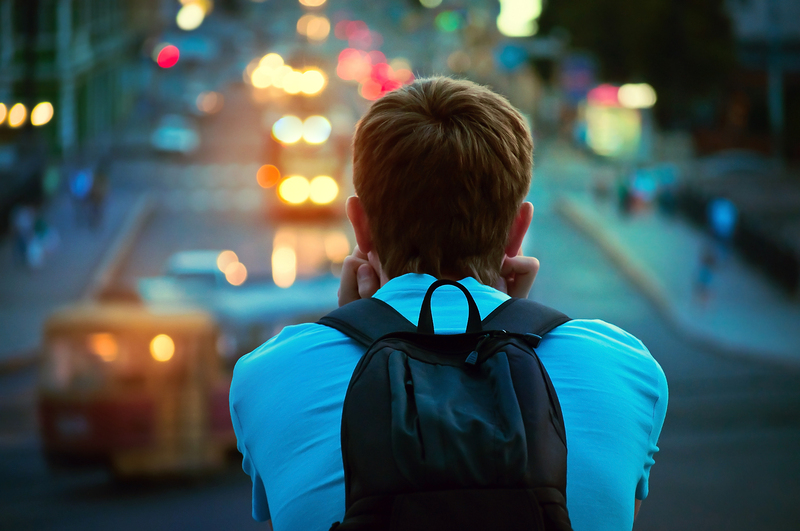The Science of Bed and Mattress Mobility: A How-To Guide
Posted on 22/06/2025
The Science of Bed and Mattress Mobility: A How-To Guide
Moving or rearranging your bed and mattress may seem like a basic chore, but it encompasses a surprising amount of science, technique, and know-how. Whether you're relocating to a new home or simply optimizing your bedroom for better sleep, bed and mattress mobility is essential for maintaining mattress health, room functionality, and, ultimately, your well-being. This comprehensive guide delves into the science of moving beds and mattresses, offering practical advice, scientific insights, and step-by-step recommendations to help you do it safely and efficiently.

Understanding Bed and Mattress Mobility
Before you start moving furniture, it's important to understand that mattresses and beds are constructed with materials and designs that respond differently to various types of movement and stress. Bed mobility science looks at not only the physical properties, such as weight and flexibility, but also the impacts on ergonomics, health, and the longevity of your sleep system.
Why Mobility Matters
- Airflow and Hygiene: Regularly moving your mattress allows for better ventilation and prevents issues like mold or dust accumulation.
- Room Functionality: Rearranging your furniture can drastically change the flow and usability of your space.
- Mattress Longevity: Even wear, through periodic rotation and movement, extends mattress lifespan.
- Relocation Needs: Safe methods are crucial for moving to a new home without damaging expensive sleep products.
Materials Matter: The Science Behind Moving Mattresses
Mattresses come in a range of materials--innerspring, memory foam, latex, hybrid, and more--each with unique properties affecting their mobility and handling. Understanding the scientific makeup of these materials is key:
Innerspring Mattresses
- Stiffer, rigid structure due to metal coils
- Offer moderate flexibility but may be heavier than expected
- Prone to damage if bent excessively; always move upright when possible
Memory Foam Mattresses
- Highly flexible and can be bent or rolled in some cases
- Can be significantly heavier than innerspring mattresses
- Should never be folded for extended periods (to avoid permanent deformation)
Latex Mattresses
- Flexible but also heavy and unwieldy
- Natural latex is very durable but can tear if improperly handled
- Should be supported evenly during movement to prevent stretching or sagging
Hybrid and Specialty Mattresses
- Combine features of various materials--handle with care as recommended by the manufacturer
- Usually heavy and must be moved with proper support and planning
The bottom line? Knowing your mattress material determines the best practice for moving it safely and keeping it in top shape.
Essential Tools and Techniques for Bed and Mattress Mobility
Successfully moving a bed or mattress goes beyond brute strength. With the right tools and techniques, you can prevent injuries, avoid damaging your possessions, and make the process surprisingly easy and efficient.
Must-Have Equipment
- Mattress Bag: Keeps your mattress clean, dry, and protected from rips.
- Moving Straps or Sliders: Distributes weight to protect your back and floors.
- Furniture Dolly: Ideal for heavy or bulky box springs and bed frames.
- Screwdriver/Wrench: For dismantling bed frames safely.
- Packing Tape and Labels: Keeps all frame parts organized for reassembly.
Preparation Steps
- Clear The Path: Ensure all obstacles are removed from your route before you begin moving.
- Disassemble Carefully: Take apart the bed frame if possible, keeping screws and parts together.
- Protect Walls and Door Frames: Use furniture blankets or cardboard to prevent scuffs and dents.
- Recruit Helpers: Mattresses are unwieldy--get at least one partner for better control and safety.
Moving Mattresses: Step-by-Step Guide
- Slip mattress into a protective bag and seal tightly to prevent dust and water exposure.
- Use moving straps or handles if available. If not, grip from the base and sides--never at points that stretch the material.
- Navigate through doorways and stairs slowly and at an angle. If stairs are tight, bend carefully without creasing.
- Load onto a dolly or drag gently across sliders for hard floors, minimizing lift whenever possible.
- Place mattress flat or upright in your vehicle, ensuring it is not bent or crimped during transport.
- Reassemble bed frame at the destination, then place the mattress on top, checking for any needed cleaning or airing out.
Pro Tip: Never drag a mattress by its handles (if included) for long distances. These are for positioning, not moving.
Optimizing Mobility for Different Living Environments
The mobility of your bed and mattress can vary widely depending on your environment. Whether you live in a high-rise apartment, a suburban house, or a small studio, tailoring your approach makes all the difference.
Apartment Living
- Narrow hallways and stairwells can be major obstacles. Measure all paths and entryways before moving anything.
- Use mattress bags with reinforced handles for easier maneuvering in tight spaces.
- If the elevator is available, ensure your mattress fits; if not, consider hoisting through large windows with professional help.
Houses and Townhomes
- Take advantage of wider doors and larger staircases.
- Lay out strategic moving paths, using furniture blankets to protect hardwood or tile floors from scratches.
- Enlist two or more helpers for heavier beds or tight corners.
Shared Spaces or Studios
- Look into space-saving solutions like Murphy beds or platform beds on casters for easy daily movement.
- Opt for lightweight foam or hybrid mattresses for more manageable regular rearrangement.
- Plan bedroom setups with mobility in mind--leave adequate clearance for walkways and cleaning access.
Bed Frame Science: Enhancing Bed Mobility
The mobility of your bed frame is just as crucial as the mattress itself, especially when it comes to regular cleaning, repositioning, or comprehensive room redesigns.
Types of Bed Frames and Their Mobility Properties
- Platform Beds: Heavy but often feature detachable slats for easier movement.
- Metal Frames: Generally lighter and collapsible; ideal for easy transportation.
- Adjustable Bases: Complex and heavy--disassembly and professional handling are recommended for moving.
- Frames with Wheels or Casters: Offer effortless gliding for regular cleaning and flexible room arrangements.
Best Practices for Moving Bed Frames
- Disassemble bed components systematically, keeping all screws, brackets, and fasteners clearly labeled.
- Cushion sharp corners with towels or bubble wrap to prevent damage to walls and floors.
- Transport large or delicate headboards vertically and secure them to avoid knocks and scratches.
- Reassemble with reference to manufacturer instructions for safety and stability.
Safety Tips: Protect Yourself and Your Investment
Improper bed and mattress mobility can lead to personal injuries or permanent damage to your sleep setup. Follow these science-backed tips for safety:
- Bend at the knees and keep your back straight when lifting heavy items.
- Work in pairs or teams--never attempt to move a large mattress or frame alone.
- Use grip gloves for better manual control, especially with slippery mattress covers.
- Take frequent breaks, especially on stairs or during long moves.
- Store mattresses flat, not upright, for long periods to prevent sagging.
Remember: Protecting your spine and your mattress are equally important!
The Science of Mattress Rotation and Flipping
Mobility isn't just about moving to a new address. Rotating or flipping your mattress at regular intervals is a scientifically backed way to ensure even wear, support, and durability.
- Rotate head-to-foot every 3-6 months (unless your mattress is zoned or pillow-topped on only one side).
- Double-sided mattresses should be flipped as well as rotated for best results.
- Hybrid, memory foam, and latex mattresses are typically single-sided and should be rotated only.
- Follow manufacturer's care instructions--some advanced mattresses may have specific mobility guidelines.
Proper rotation and mobility habits distribute pressure and minimize sagging, ensuring a more comfortable, longer-lasting sleep surface.
Common Problems and Mistakes in Bed and Mattress Mobility
- Bending foam or spring mattresses excessively--can lead to permanent deformity or broken coils.
- Dragging mattresses over rough surfaces--results in rips, tears, and dirt accumulation.
- Ignoring weight distribution--lifting unevenly can cause back injuries or mattress stretching.
- Transporting mattresses without covers--leads to moisture, stains, and potential infestations.
- Forgetting to measure spaces--results in stuck mattresses or the need for costly replacements.
How to Avoid These Issues
- Always use protective covers and proper lifting tools.
- Pre-measure doorways, stairs, elevators, and hallways.
- Enlist adequate manpower and allocate sufficient time for a careful, controlled move.

The Future of Bed and Mattress Mobility
Advancements in sleep technology are making bed and mattress mobility easier than ever before. From ultra-lightweight yet sturdy frames to mattresses that can be compressed and shipped in a box, science continues to revolutionize how we move our bedroom essentials.
- Mattress-in-a-Box Solutions: Allow easy moving and unpacking, with most modern memory foam and hybrid options.
- Modular Bed Frames: Designed for quick assembly and breakdown--perfect for frequent movers.
- Eco-Friendly Materials: Lightweight, strong, and more sustainable for both moving and daily use.
- Integrated Handles and Mobility Accessories: Innovations like locking wheels and built-in grips add convenience.
As research continues, we can expect even more breakthroughs, simplifying not only how we move our beds but also enhancing how we live and sleep.
Conclusion: Mastering the Art and Science of Bed and Mattress Mobility
By understanding the science of bed and mattress mobility, you equip yourself to maintain the integrity of your sleep products, protect your health, and create a more flexible living environment. Whether you're rearranging for style, cleaning for hygiene, or moving to a new phase of life, using the right knowledge and tools will ensure a seamless process.
- Plan ahead and prepare tools for every step of the move.
- Know your mattress material and its handling limits.
- Enlist help and practice safety at all times.
- Take advantage of new technologies designed for easier bed and mattress mobility.
With these insights, you're ready to tackle any bed or mattress move with confidence, preserving your investment and your comfort for years to come!
For more expert advice, product reviews, and sleep science insights, stay tuned to our blog!



